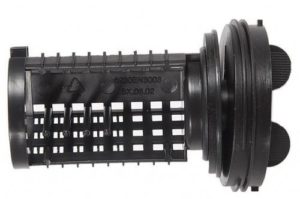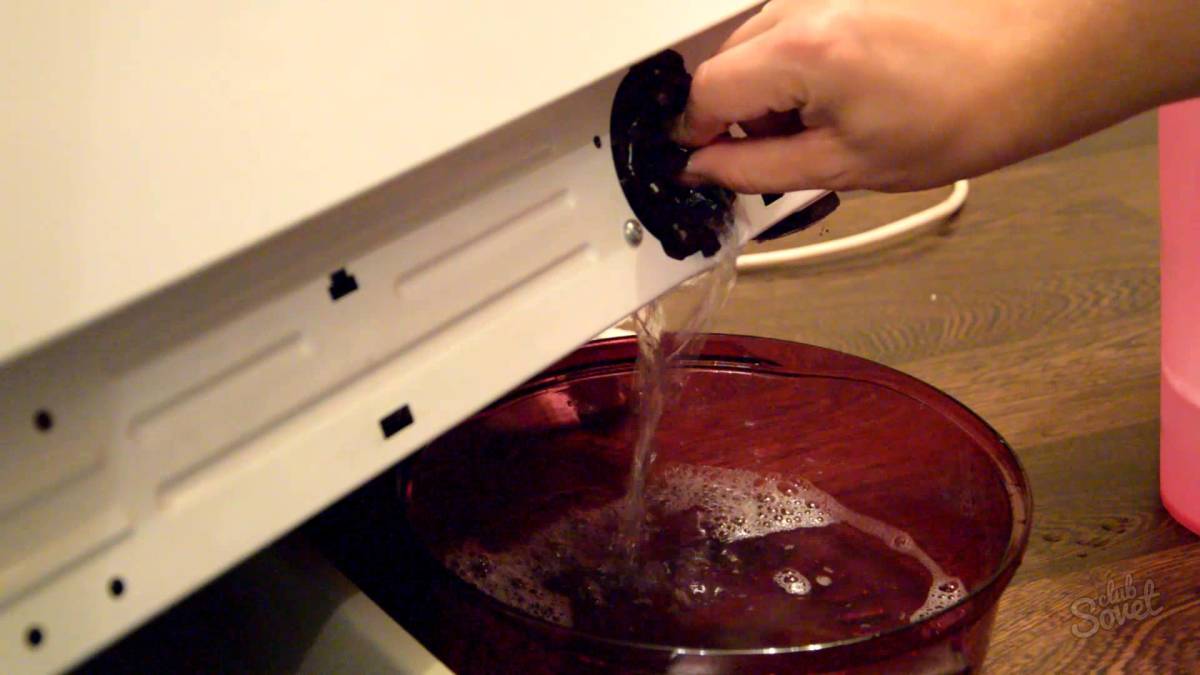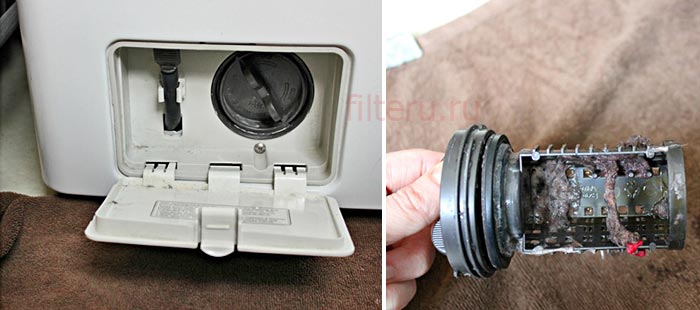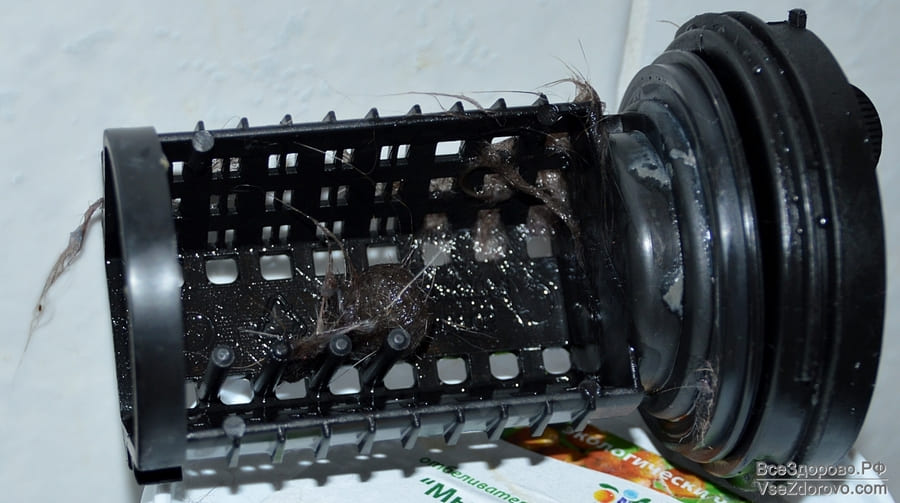 Maintaining the machine is not a very difficult task. Perhaps the only thing that needs to be done regularly is cleaning the filter. It should be noted that most models have two filters. One protects the device from debris from the water supply system, the second catches small parts that fall off during washing. This article will tell you how to clean the filters in your LG washing machine.
Maintaining the machine is not a very difficult task. Perhaps the only thing that needs to be done regularly is cleaning the filter. It should be noted that most models have two filters. One protects the device from debris from the water supply system, the second catches small parts that fall off during washing. This article will tell you how to clean the filters in your LG washing machine.
What happens if you neglect cleaning
The process of cleaning the filter in your LG washing machine is described in detail in the accompanying documentation for the device. Many people, leafing through the instructions, ignore this maintenance item, but in vain, because a dirty drain filter can cause the user a lot of serious trouble.
- Smell Threads, hair, pieces of fabric plus constant humidity are an ideal environment for bacteria. If you forget about cleaning, the filter will very soon turn into a local cesspool, become a source of an unpleasant odor, which will inevitably penetrate into the drum. It is unlikely that anyone will like it if freshly washed clothes smell like stale laundry.
- Drainage problems. A clogged drain filter is an obstacle in the path of water. With each wash, the water will drain more slowly, and later it will stop altogether.Then errors will begin to appear, and then it won’t be long before repairs are made.
- Pump failure. Increasing the load on the pump can cause it to overheat and fail. In addition, some of the contents of the filter may penetrate into the pump, which will cause the impeller to jam.
A dirty water supply filter is guaranteed to cause slow flow of water into the device, or its complete cessation. The result is an increase in the time spent on washing and a number of errors that periodically appear on the screen.
Cleaning the drain filter
Most often, the cleaning procedure refers to cleaning the pump filter. The recommended frequency for each specific model can be found in the instructions for the machine, usually once every 2-4 months. It is important to understand that there cannot be a universal, precisely adjusted interval; it all depends on the frequency of washing and the condition of the laundry being washed.

Preparatory work
Before cleaning the filter, you need to remove it. Often, owners do not know about the existence of this useful part of the washing mashine, not to mention where it is installed. In washing machines manufactured by LG, it is not difficult to find a filter; it is located at the bottom of the machine, closed by a small door. It’s easy to access; you just need to pry the door with your finger and pull it towards you.
The user will see the filter itself, which looks like a large plastic plug with a handle and an outlet for an emergency water drain hose. There is no need to remove the filter immediately. The fact is that there will certainly be some dirty water left in the drum, so you will have to prepare a rag, as well as a bucket or basin. If the machine is installed on a floor that is sensitive to liquids, it would be a good idea to raise it and lay a sheet of polyethylene.
Under the same cover where the filter is located the outlet of the emergency drain hose. Before you get down to business, you should use it. With its help, you can drain almost all the water from the drum in a controlled flow.
Extraction
To remove the filter, you need to turn it counterclockwise 45-60 degrees. The manufacturer took care of user convenience by providing a special handle on the lid. After this, the filter can be removed by moving it towards you. Here you need to be prepared for the fact that even if the water was previously drained using the emergency drain hose, some more dirty liquid will spill out.

Cleaning
In most cases, the removed filter has an extremely unpresentable appearance; it is a lump of thread, hair, scraps of fabric, and various small objects. We need to get rid of all this. First of all, you should collect large debris. Afterwards, wash the filter thoroughly under running warm water. It is not recommended to soak it in boiling water; the plastic may warp and the seal will lose elasticity, which will result in the need to purchase and replace a filter.
It is rare that the water in the tap water is of ideal quality, so over time, limescale deposits may form on the plastic. You can get rid of it using special means or the traditional method - soak the filter in a solution of citric acid.
The cleaning does not end there; the next step is the filter housing, the socket from which it was removed. You should definitely look inside the washing mashine and remove any dirt that has accumulated there. For these purposes, you will need a flashlight; you can remove accumulated debris using a soft wire.
The cleaned and washed filter is installed in place. There is no need to rush and try to screw it in “by force.”It is important to understand that the case is plastic; excessive pressure can lead to unexpected repairs.
After installation, you should make sure there are no leaks. To do this, just run a test rinse. The absence of droplets on the lid will be a signal of quality work done.
If you can't unscrew it by hand
There are cases, especially if the machine has been running for several years without cleaning the drain pump filter, that it simply does not come out. As a result of long-term use, it can literally “stick” to the body, making it impossible to remove and clean in the normal way.
If the filter cannot be unscrewed by hand, you should not try to deal with it using improvised means, use pliers or other similar tools. In this case, the filter can be unscrewed from inside the machine. To do this, place the washing mashine on its side, remove the drain pump, and remove the entire unit. The final disassembly will be performed on the table, in much more convenient conditions. Of course, it is better not to let the washing mashine get into this state.

Cleaning the intake valve screen
Cleaning the incoming water filter is performed much less frequently; the frequency of this procedure directly depends on the condition of the water supply and the quality of the water. But even if the water in the tap is close to ideal, it’s worth occasionally inspecting this useful and simple device. The procedure is extremely simple and can be performed even by an untrained person. It is just important not to forget to turn off the power to the device and turn off the water supply before starting work.
- The machine moves away from the wall for ease of operation.
- The hose is unscrewed. There is probably some water left inside, so you need to worry about a container in advance where you can drain it.
- Using pliers, the filter mesh is picked up and pulled out.
- The removed mesh is washed with running water; if it is very dirty, you can use detergent and an old toothbrush or soak it in a solution of citric acid.
- After the mesh is completely cleaned, it is inserted back. The hose is reconnected.
Next you need to open the tap and check the connection for leaks. If everything is fine, the connection is sealed, it is worth running any washing program to make sure that water flows into the device normally.
Some useful tips
In the vast majority of cases, the owner of a washing machine cannot influence the quality of water in the water supply, as well as the condition of the pipes; the only thing that can be done to protect yourself from the need to clean the inlet valve mesh is to purchase an external water filter. This is far from the cheapest device, so purchasing it only makes sense if there is a large amount of debris in the tap water.
Every washing mashine owner can reduce the likelihood of drainage filter clogging. To do this, you need to follow a number of simple recommendations:
- Be sure to check pockets before washing;
- if there are loosely sewn buttons on clothes, it is better to rip them off and sew them back after washing;
- children's toys should be washed only in special covers;
- covers are also necessary for clothes embroidered with beads, rhinestones, and other decorations that may come off during washing;
- Do not wash torn clothes under any circumstances, since during washing there will be a lot of threads and rags; before throwing the torn item into the machine, it must be sewn up;
- Heavily soiled items should be washed separately before placing them in the machine drum;
- things from the beach must be pre-soaked, sports shoes must be washed in a special case.
Compliance with simple rules will guarantee a long service life of the washing machine, but this does not exempt you from the need to periodically check the condition and clean the filters. It's not difficult, it won't take much time and won't take much effort, but it will bring a lot of benefits. Clean filters will ensure the normal functioning of the machine and protect the owner from having to remember the basics of hand washing during an unexpected repair.









